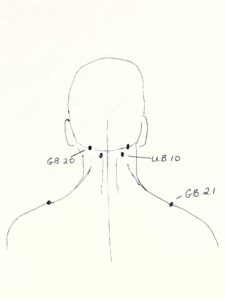Acupuncture to Treat Pain
We all experience pain at some time in our life. Our jobs are one of the biggest culprits of this pain, whether it is overusing our muscles and joints, standing long hours, or simply not taking enough breaks or watching our posture. Many people work in offices and spend long hours sitting in front of a computer leading to neck and shoulder pain, and lower back issues. Minor aches and pains are often ignored, and over time become worse. If this pain is not treated, it can become chronic and is much more difficult to get rid of.
Acupuncture is widely used in the treatment of acute and chronic pain and has been recognized by the World Health Organization to be effective in treating pain due to a number of different conditions. It is a natural and safe method to eliminate pain without unwelcome side effects.
Acupuncture helps with:
- muscle tension and pain including:
- back pain
- sciatica
- hip pain
- neck and shoulder pain
- carpal tunnel
- tennis elbow and golfer’s elbow
- knee pain
- ankle pain
- facial pain
- sprain
- migraine and tension headaches
- arthritis
- post-operative pain
- abdominal pain
- menstrual pain and PMS
- various other concerns
______________________________________________________________________________________________________________________________
Acupuncture for Neck and Upper Back Tension
Neck and shoulder tension is one of the most common complaints I see in the clinic. This can arise from several different sources.
Text or tech neck is a repetitive strain injury that affects the neck and upper body. So many of us now use computers on a daily basis, at work or at home, and also spend a significant amount of time on our phones or other devices. This motion of having our head tilted forward and looking downward puts a constant strain on our neck and upper back.
Many physical activities also affect the neck and shoulders. Jobs with repetitive movements, working in fixed positions, or large amounts of driving can all be hard on the body.
Another common cause is stress and anxiety – many of us carry our stress in our upper bodies. When this continues over a long period of time, it is hard to relax these muscles on our own. Because of this we need to find strategies to relax this tension.
Neck pain can also be caused by medical conditions, such as arthritis, meningitis, or cancer, so always have it checked out by your doctor.
What other issues arise from neck pain?
- Headaches
- numbness/tingling in the arms and hands
- Increased upper body tension overall
- Muscle spasms
- Poor circulation
How can I minimize neck and upper back pain and tension?
- Get up to move frequently, and try to work standing up for some of your workday
- Stretch frequently
- Ensure your work set up is ergonomic and provides good posture
- Exercise frequently throughout the week
- Avoid sleeping on your stomach, and use a pillow that supports your neck
- Use a headset if you are on the phone for long periods of time. Avoid tucking the phone between your neck and ear
- If you carry a purse or a bag, lighten the contents, and try to switch between shoulders
- Be aware if you are gritting your teeth and clenching your jaw
- Reduce stress as much as possible
- Use your devices mindfully
How can Acupuncture help?
Acupuncture is a good way to relieve neck and shoulder pain. Usually, I combine needling with either gua sha or cupping for the best results. To see lasting change, you will probably need to come in for 3-5 treatments. However, there is often significant relief after the first or second treatment. Results are better if the treatment begins as soon as possible if trauma is involved.
Often the nature of your work will cause you to continue to suffer from neck and shoulder issues, so in some cases monthly or bi-monthly treatments are beneficial to prevent tightness and pain from building up to uncomfortable levels.
Acupressure points to help relieve neck pain.
Massage each of these acupoints for around 30 seconds before moving to the next point. Some of these points may be more tender than others. Repeat this cycle two or three times for a total of about five minutes. (Reminder, please avoid during pregnancy; Acupuncture and Acupressure are safe during pregnancy and can be used for many issues associated with pregnancy but are safest when provided by a Registered Acupuncturist.)
Gallbladder 20 (Fengchi) – this point is located below the base of the skull, between the SCM muscle and the trapezius (see image below)
This acupoint is great for treating neck pain, as well headache and dizziness.
Gallbladder 21 (Jianjing) – this point is located on the top of the shoulders (see image below).
This acupuncture point is excellent for neck and shoulder pain and tension, dizziness, and headache.
Urinary Bladder 10 (Tianzhu) – this point is located below the base of the skull, at the edge of the trapezius muscle (see image below)
This acupuncture point is good for neck and upper body pain and stiffness, and for headaches and dizziness.
Large Intestine 4 (He Gu) – This point is located on the top of your hand between your thumb and your first finger.
This acupuncture point is well known for treating pain, especially in the head and neck.

Studies regarding Acupuncture for Neck pain